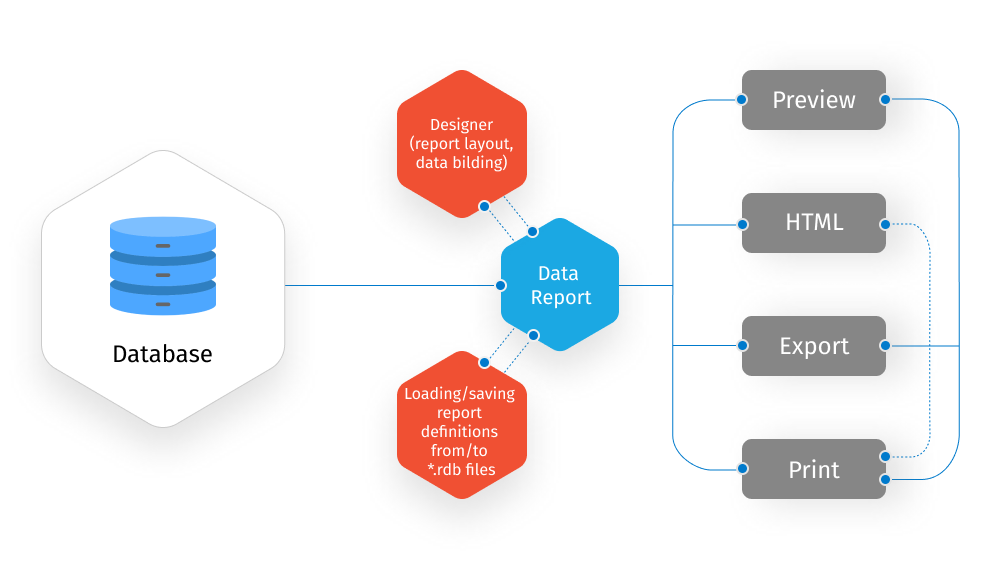Report Building Basics
This topic describes the main concepts of reports construction in dbForge Studio. It explains the basics of report creation, describe the structure of a simple report. To learn more on the report elements, see the Report Bands and Report Controls topics.
The following diagram illustrates the report’s life cycle in dbForge Studio:

Every report in dbForge Studio consists of bands, and every band contains report controls inside it. Reports can be either bound to data, or unbound. Unbound reports may contain text, images etc. provided manually without using any data source.
Bound to data reports are used to present required information in an easy to read form, so this is the most important feature of all report generators. To create a data bound report, bind the report to a data source and then specify data binding options for report controls.
A report can be created using Data Report Wizard or Blank Data Report option. It is possible to save the created report to an RDB file (for more information refer to the Saving and Loading Reports topic). If a report uses stylesheets, they can be saved to an REPSS file. Also you can load styles from a created earlier REPSS file.
After a report was created you can preview, save, and print it.